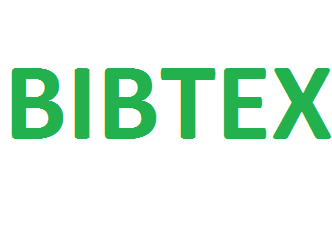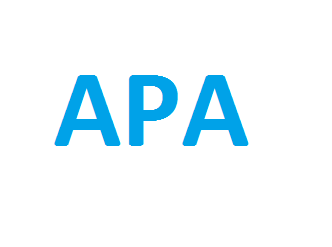
The Academic Perspective Procedia publishes Academic Platform symposiums papers as three volumes in a year. DOI number is given to all of our papers.
Publisher : Academic Perspective
Journal DOI : 10.33793/acperpro
Journal eISSN : 2667-5862
Enhancing the Student Learning in Engineering Education with the Virtual Reality Experiences
Ali Sheharyar;Othmane Bouhali
1284
503
Abstract
Virtual reality (VR), defined as three-dimensional immersive and realistic environment, is pushing its way into becoming the mainstream in many aspects of daily life. It promises to provide more engaging and immersive experiences in several areas, including training, safety and education. In the education sector particularly, it can increase student engagement, provide active and constructive learning, and provide a platform for visualizing complex concepts concretely. Texas A&M University at Qatar (TAMUQ), one of six American university campuses in Qatar, was one of the first in adopting the virtual reality technology in the education and research in the region. It acquired its first immersive VR system in 2008 and the second more sophisticated system in 2016. It organizes an annual project competition to promote the use of virtual reality and 3D visualization in the academic community. This paper describes the salient VR projects completed in last few years at TAMUQ.
Keywords:
virtual reality, education, engineering, visualization, simulation
References
[1] L. Jensen and F. Konradsen, “A review of the use of virtual reality head-mounted displays in education and training,” Education and Information Technologies, vol. 23, no. 4, pp. 1515-1529, 2018.
[2] Oculus, “Oculus rift,” 2018. [Online]. Available: http://www. oculusvr. com/rift.
[3] A. Bonasio, “Report: VR and AR Device Market to hit $1.8 billion in 2018,” 9 April 2018. [Online]. Available: http://techtrends.tech/tech-trends/report-vr-and-ar-device-market-tohit-1-8-billion-in-2018/. [Accessed 30 August 2018].
[4] HTC, “Discover Virtual Reality Beyond Imagination,” 30 AUGUST 2018. [Online]. Available: https://www.vive.com/.
[5] V. S. Pantelidis, “Reasons to Use Virtual Reality in Education and Training Courses and a Model to Determine When to Use Virtual Reality,” Themes in Science and Technology Education, vol. 2, no. 1-2, pp. 59-70, 2010.
[6] E. Hu-Au and J. J. Lee, “Virtual reality in education: a tool for learning in the experience age,” International Journal of Innovation in Education, vol. 4, no. 4, pp. 215-226, 2017.
[7] T. A. Mikropoulos, A. Chalkidis, A. Katsikis and A. Emvalotis, “Students' attitudes towards educational virtual environments,” Education and Information Technologies, vol. 3, no. 2, pp. 137-148, 1998.
[8] O. Bouhali and A. Sheharyar, “3D stereoscopic visualization as a powerful teaching tool,” in Proceeding of the International Forum on Engineering Education, Sharjah, UAE, 2010.
[9] A. Gupta, “Experiences in introducing 3D visualization in petroleum engineering education,” in SPE Annual Technical Conference and Exhibition, Society of Petroleum Engineers, 2009.
[10] A. Gupta and M. Poppelreiter, “Innovative Field Camp for Education and IndustryAcademic Collaboration in Geology-Based Reservoir Model Building for Carbonate Reservoirs in the Middle East,” in SPE Annual Technical Conference and Exhibition,
Society of Petroleum Engineers, 2010.
[11] A. Nasir, A. Sheharyar, M. Z. Shakir, K. Qaraqe and O. Bouhali, “3D visualization to aid engineering education: A case study to visualize the impact of wireless signals on human brain,” in Global Engineering Education Conference (EDUCON), IEEE, 2014.
[12] E. Tetlow, R. Cuttler, F. Al-Naimi, A. Sheharyar, O. Bouhali, L. Delaney and J. Adcock, “Landscape visualization, sea-level change, and human occupation in Wadi Debayan, north-western Qatar,” in Seminar for Arabian Studies , 2013.
[13] A. Abdalla, D. Jayakrishna, N. Ozalp, O. Bouhali and A. Sheharyar, “Three dimensional visualization of hydrogen and carbon black production in a vortex solar reactor,” in 2nd Annual Undergraduate Research Conference on Applied Computing, Dubai, UAE, 2010.
[14] C. Cruz-Neira, D. J. Sandin and T. A. DeFanti, “Surround-screen projection-based virtual reality: the design and implementation of the CAVE,” in Proceedings of the 20th annual conference on Computer graphics and interactive techniques, 1998.
[15] Visbox, “VisCube C4-T4 - CAVE Immersive 3D Display,” Visbox, [Online]. Available: http://www.visbox.com/products/cave/viscube-c4-t4/. [Accessed 30 August 2018].
[16] WorldViz, “Vizard,” WorldViz, [Online]. Available: http://www.worldviz.com/vizard. [Accessed 30 August 2018].
[17] “Texas A&M University at Qatar | Petroleum Engineering,” [Online]. Available: https://pete.qatar.tamu.edu/. [Accessed 5 September 2018].
[18] 3DSOM, “3DSOM – 3D Models from Photos,” [Online]. Available: http://www.3dsom.com. [Accessed 30 August 2018].
Cite
-
 %0 Academic Perspective Procedia (ACPERPRO) Enhancing the Student Learning in Engineering Education with the Virtual Reality Experiences% A Ali Sheharyar , Othmane Bouhali% T Enhancing the Student Learning in Engineering Education with the Virtual Reality Experiences% D 11/9/2018% J Academic Perspective Procedia (ACPERPRO)% P 874-883% V 1% N 1% R doi: 10.33793/acperpro.01.01.149% U 10.33793/acperpro.01.01.149
%0 Academic Perspective Procedia (ACPERPRO) Enhancing the Student Learning in Engineering Education with the Virtual Reality Experiences% A Ali Sheharyar , Othmane Bouhali% T Enhancing the Student Learning in Engineering Education with the Virtual Reality Experiences% D 11/9/2018% J Academic Perspective Procedia (ACPERPRO)% P 874-883% V 1% N 1% R doi: 10.33793/acperpro.01.01.149% U 10.33793/acperpro.01.01.149
© Academic Perspective 2018. All rights reserved.




